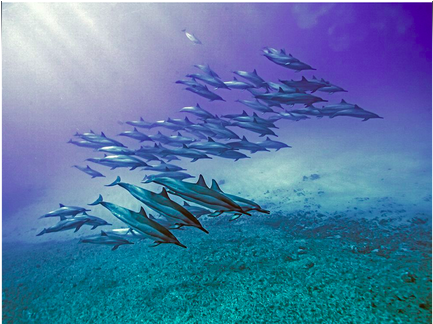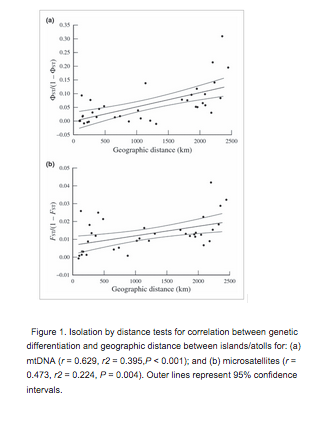Marine Animal Sex-Dispersed Migration Behavior
Biology 342 Fall 2015
Margalit Leiser and Jaelin Cola
Mechanism
How the Behavior Functions
Dolphins, a migratory marine animal, are known to disperse across large areas (Möller et al). Dolphins are also known to form highly complex social structures - to the degree that they are one of the animals most commonly anthropomorphized by the layperson. Dolphins form extremely close-knit kin relationships within their communities, which are bounded by distinct geographies (Bilgmann et al). Dolphin populations display such high site fidelity that habitat type promotes genetic differentiation and speciation (Möller et al).

General Migratory Patterns
While such findings as Möller’s would seem to imply a lack of migratory behaviors amongst dolphins, this conclusion is unsupported by genetic evidence. Comparison of mDNA and DNA microsatellites in dusky dolphins indicates that historical dolphin migrations were most likely undertaken as a response to fluctuating ocean temperatures and subsequent alterations to prey abundance (Harlin-Cognato et al). Additionally, genetic connectivity studies of bottlenose dolphins indicate progressive geography-based migration and differentiation (Wiszniewski et al). These migrations are likely to have been motivated by female behaviors; females have been shown to seek out ideal habitats (Danil & Chivers).
Sex-Biased Migrations

The above studies address the certainty of dolphin migration in general. There are many additional studies confirming that female dolphins of many species - bottlenose, dusky, spinner, and striped, among others - are philopatric, while males move between communities (Adams & Rosel). This phenomenon arises largely from the unique nature of dolphin social structure. Female dolphins form a large number of unstable bonds, the strengths of which are subject to frequent change; male dolphins form a much smaller number of social bonds (Morteo et al). The strongest and most prolific bonds within these are familial, especially maternal (Kita et al). However, mother-offspring associations decrease after weaning, and mother-son associations decrease more than mother-daughter associations (Tsai & Mann). This would produce an incentive for males to seek out new environments in which strong social bonds could be formed. Indeed, male and female juvenile bottlenose dolphins display similar habitat-ranging behaviors; it is only after adolescence that male behaviors differentiate (McHugh et al). Because male dolphins migrate in between relatively stable social groups following adolescence, it may be concluded that male dolphin migratory behaviors function socially; males migrate with closely-bonded individuals and seek out communities with a larger amount of potential mates. This conclusion has been upheld by mtDNA and microsatellite studies of spinner dolphin communities, in which populations with more stable gene structure exhibited higher rates of gene flow (Andrews et al).
A final caveat to the phenomenology of sex-biased dispersal is dolphins is this: while social bonds and mating opportunities dictate the vast majority of dolphin migrations, they are by no means the only factor influencing such behaviors. As with many complex animal behaviors, measurable effects are often the result of many additive factors. In the case of dolphin migration, it has been shown that bottlenose communities in low-productivity systems - where survival may depend strongly upon cooperation - display unprecedented low levels of migration. Therefore, it is wise to assume that, while social bonds exert an extremely strong influence with regard to migratory dolphin behaviors, other factors contribute strongly as well.